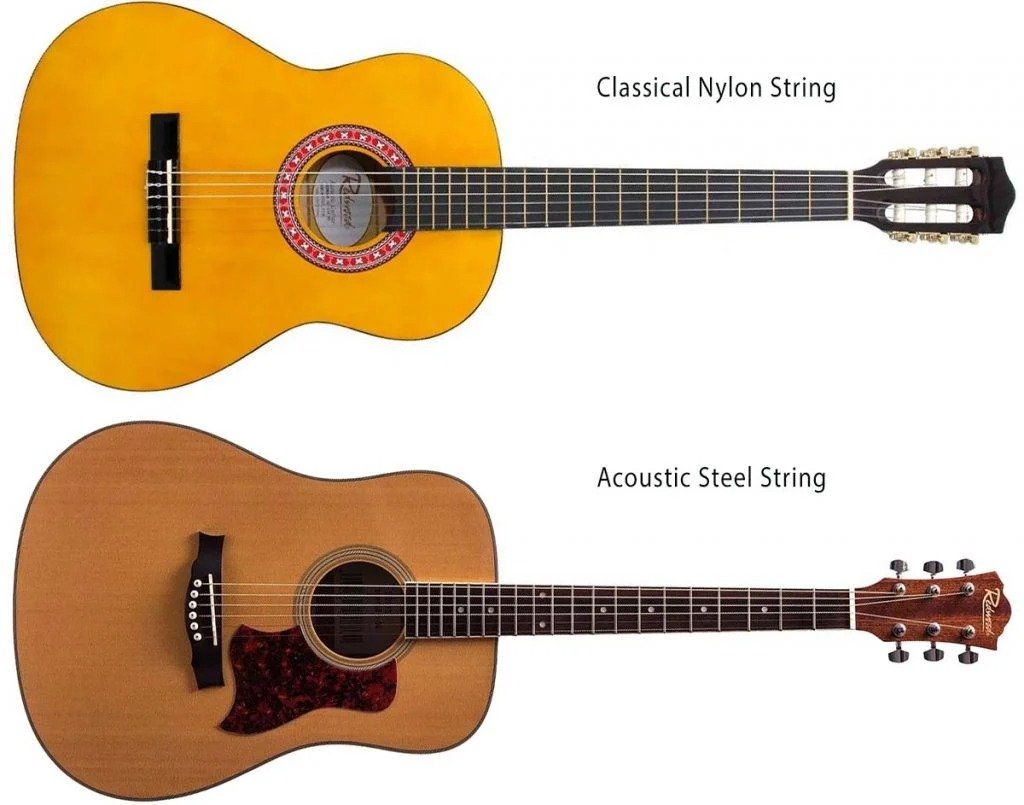
What’s the Difference Between an Acoustic Guitar and a Classical Guitar?
At Sweet Symphony, we’re proud to offer “all types” of Guitar lessons. But what does that mean? How many different types of Guitar are there?! Well, when we say “all”, we generally mean – Acoustic, Bass, Classical and Electric Guitar. Most people can identify a Bass and Electric Guitar as being different instruments, but what about Acoustic and Classical? What’s the difference between these two? Read on and we’ll explain more…
Firstly, it’s important to define the word “acoustic”. In musical terms, an acoustic instrument is simply an instrument which doesn’t need an external power source (eg. a plug, amplifier etc) to make noise. So, by this reasoning, a Classical Guitar is, in fact, an acoustic Guitar. But not all acoustic Guitars are Classical Guitars…confused?!
The Classical Guitar
A Classical Guitar (sometimes called a Spanish Guitar) has nylon strings and a slightly smaller body. It also has fewer frets and a wider neck than its steel-stringed counterpart.
As the name suggests, a Classical Guitar is prominently used in more traditional -or Classical – forms of music.

The Acoustic Guitar
A steel-stringed Guitar is what is commonly referred to as an Acoustic Guitar. The larger body and steel strings mean that it is a lot louder than a Classical (and for a beginner guitarist, means it’s much harsher on the fingertips!)
An Acoustic Guitar lends itself to more contemporary styles such as Rock, Pop, Blues etc.
Is there a difference in how you play each Guitar?
The main difference in the way the two Guitars are played is that the Classical is typically a lot stricter in terms of posture and technique, with a large focus on the right hand fingerpicking technique. It is common to use a footstool when playing, which raises the neck of the Guitar to more of an angle to allow you to achieve the correct posture for this type of playing.
Acoustic Guitar-playing is less “strict”, and technique can differ depending on the player and/or the style of music being played. A plectrum (or “pick”) can be used as well as, or in place of, fingerpicking. Typically, acoustic playing lends itself more towards chords and strumming – the louder volume helps with the projection of the instrument.
Still not sure which one is right for you?
If you haven’t yet bought a Guitar and you’re not sure about which style of Guitar you’d like to take up, our suggestion would be to book an initial lesson. Here, you’ll be able to speak to your Teacher and let them know your preferred styles/genres of music and they’ll be able to advise you as to the best course of action. We have spare instruments in the Studio – both Classical and Acoustic – so you can try each type of Guitar out for yourself and see which feels to be a better fit.

